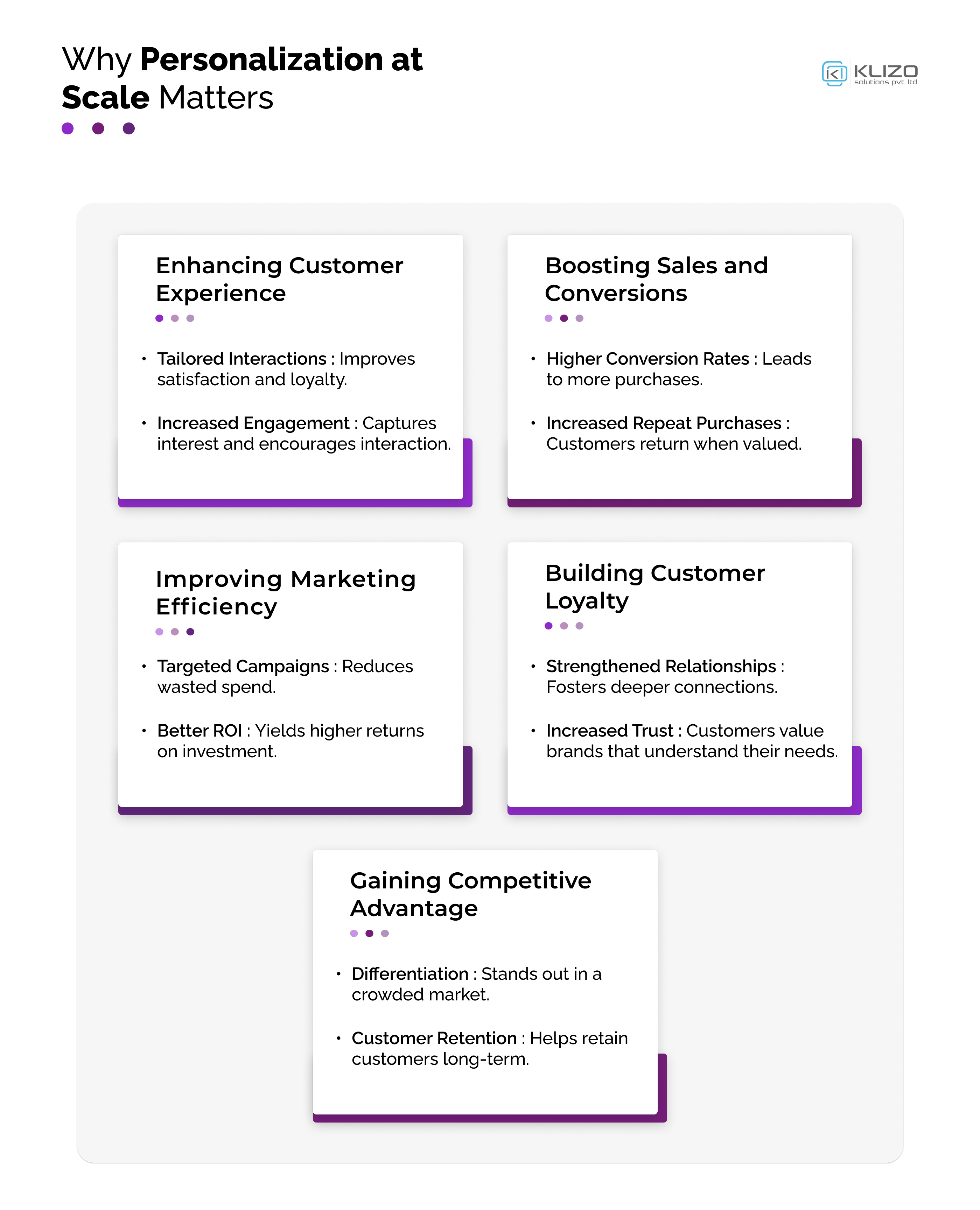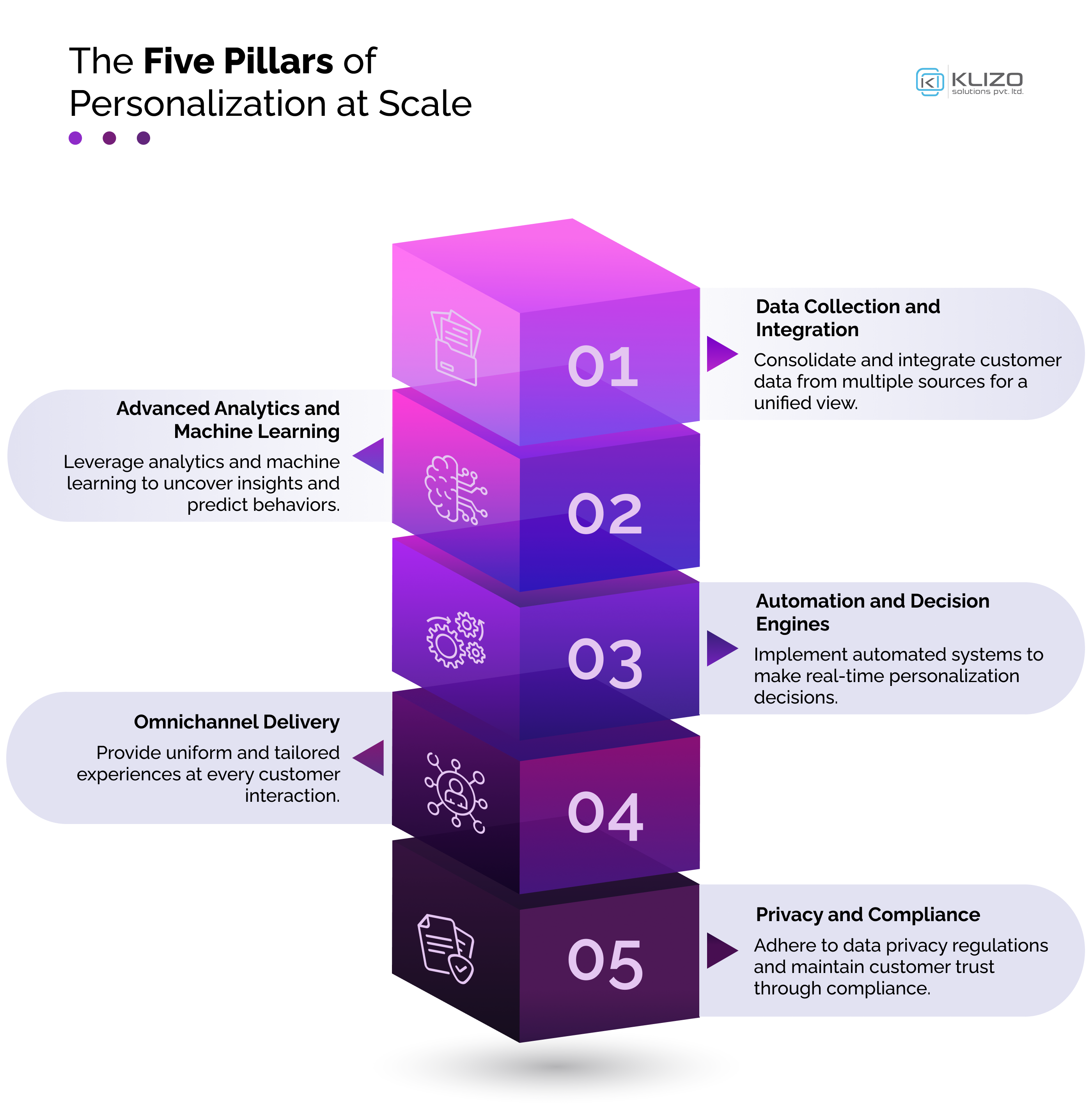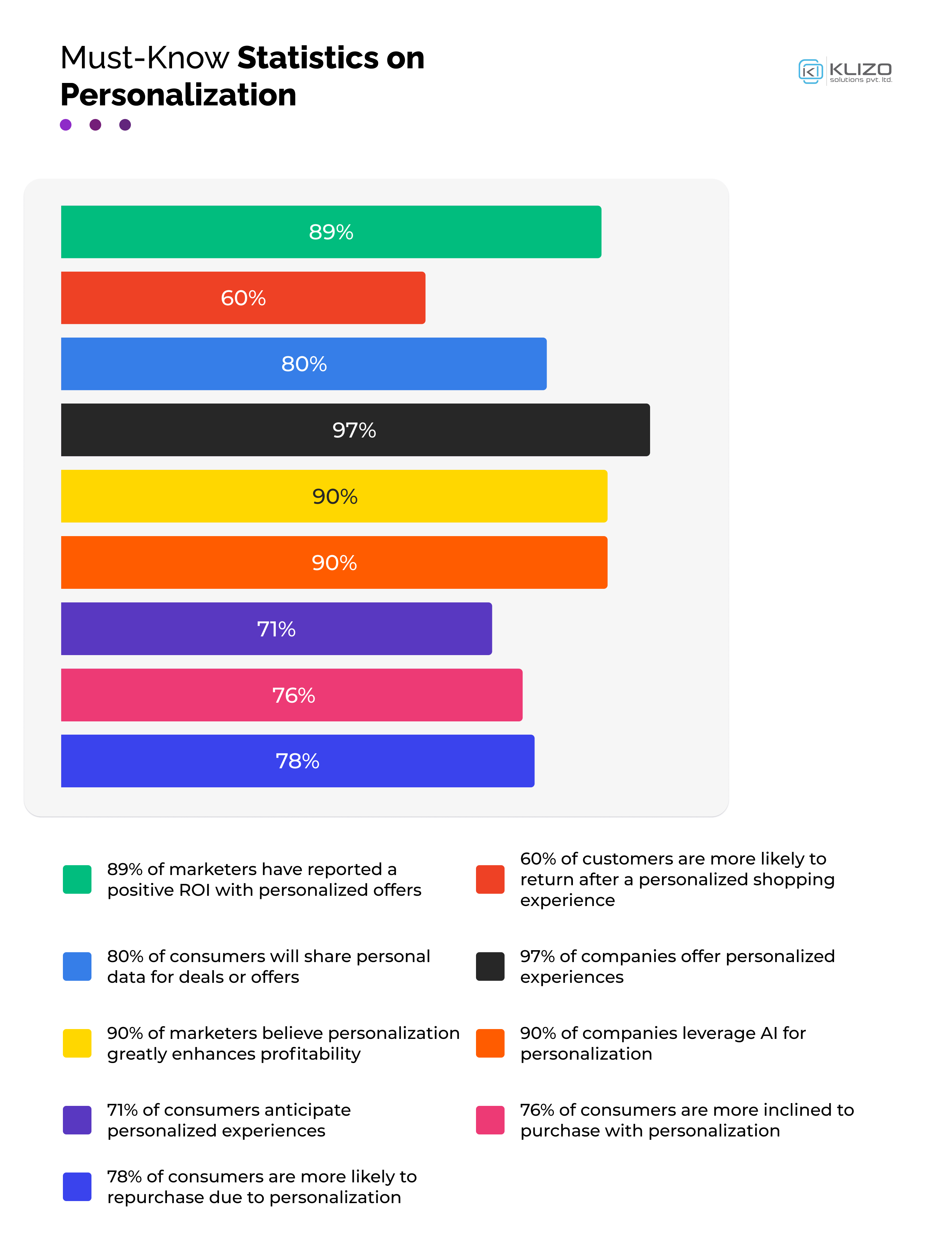


Imagine walking into your local Starbucks. The barista behind the counter greets you by name and already knows your favorite order—a venti caramel macchiato with almond milk—and even remembers that you prefer it extra hot.
It’s not magic—it’s personalization at its finest!
Now, imagine this level of customization applied on a grand scale, tailoring personalized customer experiences for millions of individuals simultaneously. Welcome to the world of personalization at scale!
At Klizo Solutions, we understand the power of personalized experiences, and we’re here to show you how they can transform your business.
So, grab your Starbucks, settle in, and let’s explore how your business can create these extraordinary moments for every customer, every time!

By consolidating and integrating customer data from multiple sources, businesses can create a unified view of each customer, enabling them to deliver highly personalized customer experiences. Let’s take a look at how this step works.
Collecting Data from Diverse Sources Through Various Data Collection Techniques:
Integrating Data for a Unified View:
An online retailer collects data from website interactions, email campaigns, and social media engagements. By consolidating data from various collection methods, businesses can monitor customer browsing habits, purchase behaviors, and preferences, allowing them to deliver personalized customer experiences through tailored product recommendations. This approach not only enhances the shopping experience but also boosts the chances of repeat purchases.
Remember, facing data integration challenges, stemming from inconsistent data formats, varying data quality, and siloed information across multiple platforms, is a common obstacle that organizations often face. To overcome these obstacles, you must implement standardized data protocols and invest in robust integration tools that streamline data consolidation.
Regular data quality assessments and adherence to data privacy regulations are also essential for effective integration.
Advanced Analytics and Machine Learning are crucial components for delivering personalized customer experiences at scale. By leveraging these technologies, you can uncover deep insights into customer behavior and predict future actions, enabling highly personalized customer experiences.
Let’s take a look at how this works:
Data analysis is vital for understanding customer behavior and enhancing personalization. Descriptive analytics uncovers past trends by examining historical data, such as tracking customer purchase patterns. Diagnostic analytics aims to identify reasons behind specific behaviors, like the success of certain marketing campaigns.
Predictive modeling or predictive analytics helps anticipate future customer actions. Customer segmentation utilizes machine learning algorithms to group customers by shared characteristics, allowing for targeted marketing. Behavior prediction forecasts actions like purchase likelihood and potential churn.
Personalization algorithms, such as recommendation engines, enhance the customer experience. Machine learning models enable businesses to tailor product recommendations, like how Netflix suggests shows based on viewing history. Additionally, dynamic pricing strategies adjust prices in real time, factoring in demand and customer profiles for a personalized pricing approach.
An online retailer uses advanced analytics tools to analyze customer browsing and purchase data. Machine learning models then predict which products a customer will likely buy next and recommend those items through personalized emails and website suggestions. This approach has been shown to increase conversion rates and customer satisfaction significantly.

When it comes to empowering businesses with real-time personalization capabilities, automation and decision engines come into play. Believe it or not, automation in personalization plays a major role! By implementing automated systems, businesses can make real-time decisions that enhance personalized customer experiences and ensure tailored interactions.
Automated systems analyze customer data and behaviors using predefined rules and machine learning algorithms to enable personalized customer experiences.
Decision engines are essential in this process, evaluating multiple data points in real time, including customer demographics, previous interactions, and current market trends.
Popular automation tools for real-time personalization include Salesforce Marketing Cloud, Adobe Experience Cloud, and HubSpot, which help businesses implement automated systems and decision engines effectively.
A music streaming service employs decision engines to create customized playlists for users based on their listening habits. Thanks to automation in personalization, the automated system analyzes user data to curate a selection of songs that align with individual tastes, ensuring a unique experience for each listener.
In today’s digital landscape, customers engage with brands through various channels, including websites, social media, email, and in-store visits. Ensuring seamless and personalized customer experiences across all these touchpoints is crucial for building strong customer relationships while maintaining coherence across channels.
Omnichannel delivery integrates data and communication across multiple channels to create personalized customer experiences. Customers receive consistent messaging and personalized content, whether using a mobile app, logging in on a desktop, or visiting a physical store.
Businesses need a centralized customer relationship management (CRM) system to achieve this, consolidating data from all channels. This system enables brands to track customer interactions, preferences, and behaviors, ensuring that each touchpoint reflects a unified view of the customer, delivering personalized customer experiences successfully.
A bank offers personalized financial advice through various channels. Customers can access their accounts via a mobile app, receive tailored emails with relevant offers, and visit a local branch for in-person assistance. Each interaction reflects the customer’s preferences and history, ensuring a uniform experience across all touchpoints.
Privacy and compliance are fundamental to building and maintaining customer trust in an era where data security concerns are paramount. As businesses strive to deliver personalized customer experiences, adhering to data protection regulations is essential for protecting customer information, attending to their privacy concerns, and fostering a sense of security.
Privacy and compliance require implementing robust policies aligned with regulations like the General Data Protection Regulation (GDPR) and the California Consumer Privacy Act (CCPA). Businesses must collect, store, and process customer data responsibly, obtaining explicit consent and offering clear data management options, such as opting out of marketing or deleting personal information.
Organizations often invest in specialized tools for advanced analytics in personalization to monitor data usage and ensure compliance. Regular audits and assessments are also essential for identifying vulnerabilities and proactively addressing compliance gaps.
A healthcare organization adheres to strict privacy regulations by implementing secure data handling practices, which include encrypting patient data and ensuring that only authorized personnel have access, thereby maintaining compliance with regulations like HIPAA.

In today’s fast-paced digital world, personalization at scale is not just a competitive edge—it’s necessary! Effective personalization can boost revenue by 10% or more.
Consumers now expect personalized interactions, with research indicating that between 47% and 76% of them look forward to tailored experiences with brands.
At Klizo Solutions, we live and breathe these five pillars of personalization. By incorporating sophisticated algorithms, data-driven insights, and seamless integration, we craft apps and digital solutions that consistently captivate, engage customers, and deliver personalized customer experiences.
Ready to elevate your customer experience? Contact Klizo Solutions today to build personalized interactions that resonate with your audience and drive your business forward!
Start your journey toward unparalleled customer engagement through personalized customer experiences today!
Previous article
Joey Ricard
Klizo Solutions was founded by Joseph Ricard, a serial entrepreneur from America who has spent over ten years working in India, developing innovative tech solutions, building good teams, and admirable processes. And today, he has a team of over 50 super-talented people with him and various high-level technologies developed in multiple frameworks to his credit.

Subscribe to our newsletter to get the latest tech updates.